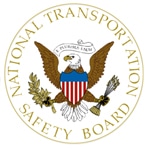 Railroad and rail transit roadway workers are subject to on-the-job risks and hazards markedly different from those faced by other railroad employees. The jobs of railroad engineers and conductors include risks primarily related to moving trains – derailments, collisions with other trains; the jobs of roadway workers involve hazards that include moving rolling stock and other equipment and vehicles, as well as falls, electrocution, and natural hazards.
Railroad and rail transit roadway workers are subject to on-the-job risks and hazards markedly different from those faced by other railroad employees. The jobs of railroad engineers and conductors include risks primarily related to moving trains – derailments, collisions with other trains; the jobs of roadway workers involve hazards that include moving rolling stock and other equipment and vehicles, as well as falls, electrocution, and natural hazards.
During 2013, 11 railroad roadway workers died while doing their jobs, which is nearly 80 percent of the total number of railroad employees who died in 2013 (14). This represents the largest number of railroad roadway workers killed while on duty in 1 year since 1995, when 12 died. Also in 2013, four rail transit roadway workers died.
The types of accidents in which roadway workers lost their lives in 2013 included falls from bridges, incidents involving bucket lifts, and a mudslide, as well as strikes by moving equipment. The number of roadway worker deaths in 2013, the findings from investigations of those deaths, and the increasing number of these fatalities prompted the National Transportation Safety Board (NTSB) to initiate a special investigation to identify safety issues facing roadway workers and to recommend actions to address these issues.
The NTSB examined the roadway worker fatalities reported for 2013. For some accidents, the NTSB performed limited investigations either on scene or through reviews of the accident records. For other accidents, the NTSB used information prepared by other investigative agencies, including the Federal Railroad Administration (FRA), the Federal Transit Administration (FTA), and the Occupational Safety and Health Administration (OSHA), as well as railroads and rail transit agencies.
The purpose of these NTSB examinations was to identify the circumstances in which the accidents occurred and to discover any deficiencies or limitations – in operating procedures and regulations or adherence to those procedures and regulations – that suggested causes and remedies.
Of the roadway worker fatalities in 2013, 11 resulted from 11 accidents on railroads regulated by the FRA, and four resulted from three accidents on rail transit properties with FTA oversight. Because roadway worker fatalities have been increasing over the past four years, careful examination of the causes of these recent fatal accidents is warranted.
To view the NTSB’s Special Investigation Report, click here.
Related News
- Value of Unions
- 2026 Railroad Retirement and Unemployment Insurance Tax Changes
- SMART-TD Members on UP Properties Ratify Five-Year Agreement
- Railroader’s Son to Perform at Carnegie Hall
- Rail Trespassing and Suicide Fatalities Up 70%
- Help the McLucas Family After Fire Destroys Their Home
- SMART-TD’s Chris Smith Wins City Council Seat in Tama, Iowa
- Railroader Healthcare Costs Remain Stable While National Averages Soar
- Call to Action in Mass.: Transit Safety Legislation Up for Final Vote
- New Jersey’s “Vote Labor” Push led by SMART-TD’s Ron Sabol